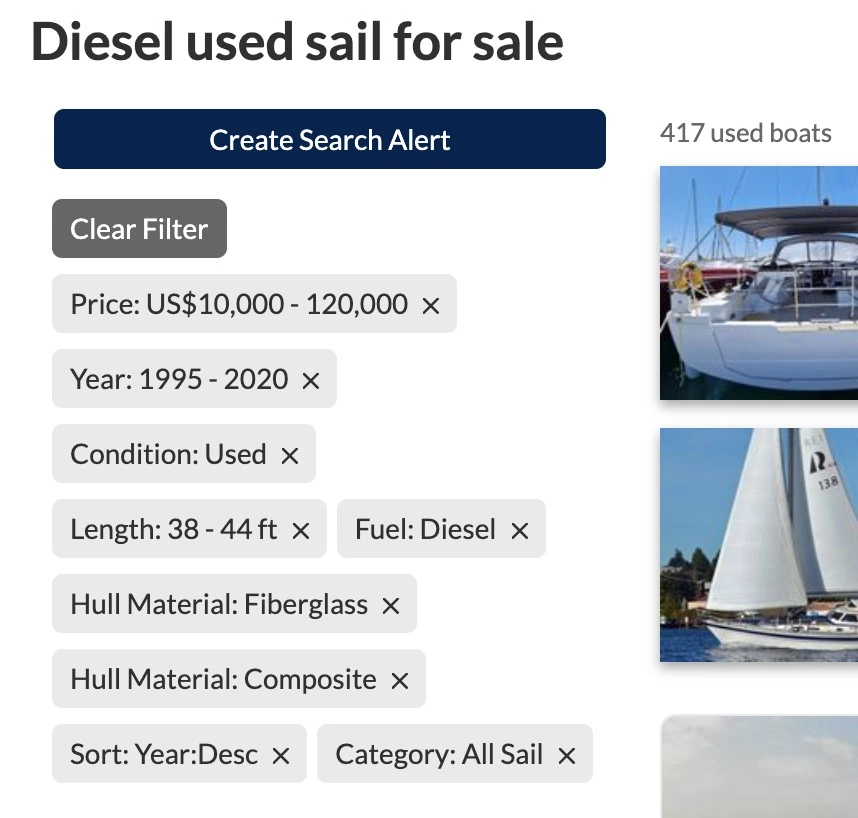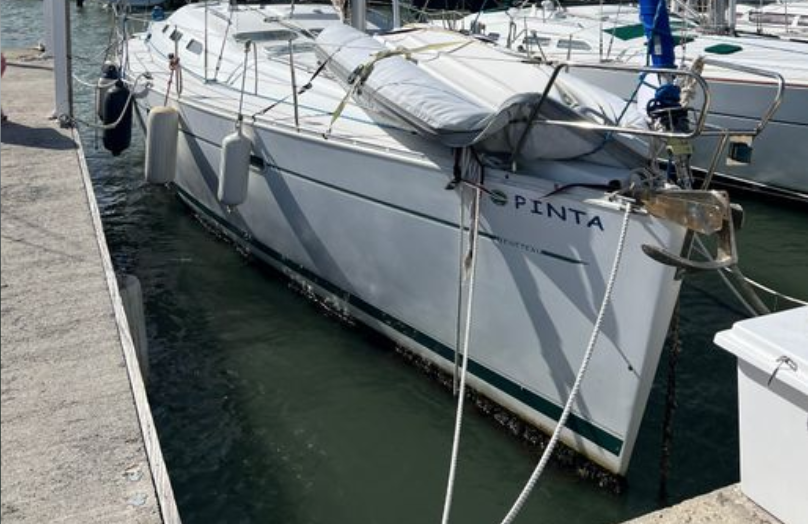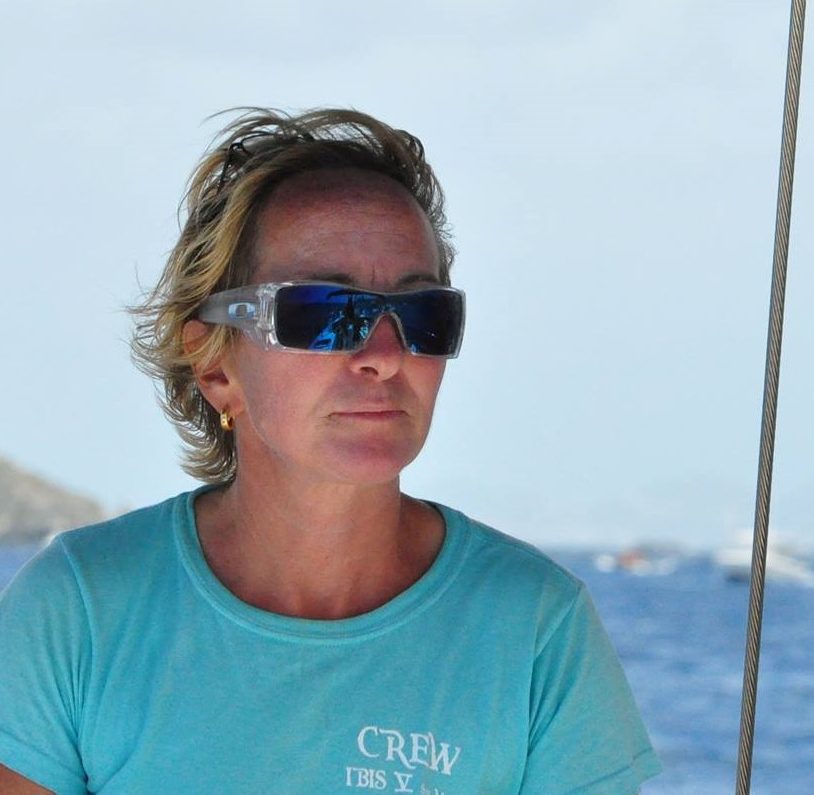So you’ve been searching the used sailboat listings of Yachtworld, and other listing websites and you’re struggling to tell the good boats from the not so good ones. The info here will help you make sense of a long list of boat makes and models, and help highlight a well cared for world cruiser from a beaten up coast-hopper, from an out-and-out project boat.
The analysis that follows is particularly pertinent to sailing boats between 38 and 42 feet, but could easily be applied to boats up to 50 feet-ish.
Your Search Criteria
You’ve probably got an idea in mind for the boat you’re looking for, if not, feel free to have a look at my guide to determining your needs from a boat purchase, but presumably you should be able to input the following info:
- Sail or Power
- Length
- Age – remembering that boats over 20 years old can be difficult to get insurance for.
- Budget – put in a figure >0 for the lower end or you’ll get “contact the broker for price” listings
- Engine fuel – depending on your needs from a boat but the best marine choice is diesel
On some websites you can also put in the number of cabins/beds you’re looking for and the style of rigging; the more masts you have the more standing rigging, running rigging, deck hardware and sails you have to maintain.
Then the next biggie is the hull material. I’m going to make some sweeping statements in the next few sentences
Unless you’re planning to sail to the Arctic, forget about a steel hull; the majority were amateur built and whilst there’s nothing wrong with that, all steel hulls are prone to condensation and rust. The upkeep of a steel hull can take over your life. Similarly, unless wood is your thing, forget about a wooden boat. They classics look absolutely beautiful, but the amount of upkeep is phenomenal, and that’s if you could find a hull in your price range with no rot. Aluminium hulls can be very good but they have specific problems relating to electrolysis and plate deterioration which can become dangerous if you don’t know what to look out for.
Forget also exotic composites unless you’re after a lean mean racing machine, carbon has its own issues with electrolysis and component failure, were it to occur, is a specialist repair job. So that leaves you with a fibreglass hull – in the example below I’ve included composite as brokers don’t always put FRP.
I recently did a search for some clients on the Yachtworld website; this is the only boat sales listing website with only brokered boats, all other boat listing websites allow private sellers to list. However, Yachtworld has a great range of boats listed and is a good starting point; once you have narrowed down your preferred make and model, you can spread your search a bit wider.

You can sort by age – new to old and vice versa, length and price, or if you’ve been searching for a while you can look at the newest listings.
Lets first have a look at the brands in the list.
About Sailing Boat Brands
The following comments are made keeping in mind that the client was looking for a liveaboard vessel with the hopes of sailing in the Pacific in the future. Many of the lighter built brands given below are perfectly good for different use cases and you should be clear on your own before shortlisting possible options… comments are my personal opinion and are not meant to offend in any way!
The first thing I’m going to say is “steer clear of custom builds”. Unless you find a bargain boat that ticks every single one of your wish list items, a custom boat will always be difficult to resell as it doesn’t have any brand reputation or builder support behind it. When you’re buying a boat, resale-ability has to be high up on your tick list.
Hunters are built in the USA, they are roomy inside but they lack a backstay and are lightly built. They have a love/hate reputation and I personally would steer clear although they are very popular in the USA.
Beneteaus are the most prolifically built brand in the world, they were primarily designed for the charter market and this gives them an advantage in the liveaboard stakes – they have big fridges, many have aircon and the outside space is normally quite capacious. The older models (pre 2002 when the company was bought out by Moorings/Sunsail) are more strongly built although they have their design faults too as the inner strengthening/stiffening grid is glued to the hull… in many hurricane damaged models and others that have been sailed hard, the glue has broken away and the hull is no longer as strong as it should be. A good surveyor will look for this. Anything with “First” in the model name was built for the regatta/racing market and is likely to have been hard sailed.
Ditto Jeanneaus which are also part of the Beneteau Group of brands (as are Lagoon catamarans).
Dufour has changed hands several times over the years and is now in the hands of some Italians who do not produce good strong boats (nor cars 🤣) The older models are well built and strong (I have one that I love; I also had a Beneteau from the same era – 1996-98 that I liked too).
Salona yachts are built in Croatia and are a relative newcomer to boatbuilding and build largely for their local charter market – wouldn’t be high on my recommendation list as they have limited global exposure.
Hanse has very nice lines but they are Ikea boats and not very strong.
Bavaria has had ups and downs in production and some models had problems in the past with hull stiffening, I think these issues have mainly been overcome now; they were also built for the charter market and are very liveable.
Elan, also built in a Slavic country – built for performance so they are lightweight.
Grand Soleil and Comet – Italian built… sorry Italians, I love you and your country!
Westerly – British built and very strong, not very pretty though, IMHO
Catalina – One of the better US built brands and spacious inside
Island Packet – traditional looking double enders built in the US and I understand they are pretty strong. If you like the traditional design this could be on your list.
X-Yachts built in Denmark, beautiful craftsmanship and good performance
Moody – built in UK for going round the world
Wauquiez – well built boats for going round the world, spacious liveaboards.
I think that covers most of the brands in the listings, if I’ve not mentioned them its because I probably wouldn’t buy one 😉
Then there’s some telltales about where the boat is located…
About Boat Locations for Used Sailboat Listings
Boats in Croatia and Greece are mostly coming out of charter and have been hard used and not very well maintained – steer clear unless it has been sailed there by a couple cruising the Med, in which case it is likely to be well equipped and better maintained.
The same is true for many boats listed in BVI and Martinique which have big charter bases – anything which says “Moorings Brokerage” or “Dream Yacht Brokerage” is coming out of a charter fleet. These will be bare bones boats which you can often pick up at a great price and add your own liveaboard kit to… its a way of getting a newer boat but expect to have to spend some money on it.
Boats listed in France and UK – these are both great seafaring nations and you can find boats that have been lightly used and well cared for. The same is true for anything owned by a German or Dutch person!
Anything listed by an Italian broker is subject to a commission to the broker payable by the buyer of between 2 and 10% of the purchase price.
Boats in the Caribbean and Southern US will have been heavily exposed to UV and if you see the canvas looking bedraggled or the clear windscreens are foggy in the photos then someone hasn’t cared for the boat much or hasn’t had the money to spend on it. There are many people for whom living on board is exactly that, and the boat is just a roof over their head – spend on maintenance is not a priority.
If something has teak decks, look also for missing caulking and exposed screw heads – a sure sign that the deck needs work… and maybe a lot more too. Unless you’re prepared for teak replacement and, probably, deck repair work in your near future, its wise to steer clear of teak decks. I personally love them but there is work in maintaining and replacing them, both of which I’ve done.
Boats in North America are a mixed bag of live-aboards, racers and cruisers, although most of the cruisers are down here in the Caribbean these days. Look at the pictures carefully for guidance on how well they’ve been maintained.
Australia and New Zealand have traditionally been poorly supplied with production boats due to the shipping distance, and any boats that come to the market there are custom (home) built, imported by the major manufacturers such as Beneteau, Jeanneau, or have sailed there under their own steam. In the latter case they are generally well kitted out for the cruising/liveaboard lifestyle and have proved themselves as worthy ocean cruisers. Prices are generally high as demand exceeds supply down under.
Some very nice boats are to be found at the end of long passages where people have “done” their planned trip, or got to a point where one or other of the party has said they’re done! Such examples include:
- Gibraltar – for people heading south from northern Europe
- Canaries – for people leaving the Mediterranean and Northern Europe
- Caribbean – St Lucia, Grenada and St Martin for people having crossed the Atlantic or travelled down from North America
- Pacific – Tahiti/Marquesas – for people who’ve crossed the Pacific and don’t want to go further
Boats in the South Pacific are generally listed at lower prices as the islands are difficult (long journey) and expensive to get to for an inspection visit.
From the Photos & Listing Information
Listing photos, and also the supplied inventory can tell you a lot about a boat if you take the time to study them.

This Bavaria in Croatia might seem like a good deal at an asking price of $42,000 until you read that:
“There was an accident and water entered the inside of the boat, necessary to do a general service on the engine, install new electrics. Final design of the furniture has not been made, can be make according to wishes”
Reading between the lines, the engine may need to be reconditioned or replaced, all of the electrical wiring and electronics needs to be replaced and the interior cabinetry needs to be rebuilt. Ballpark costs of between $25-45,000. An undamaged, equivalent year boat of the same model can be had for around $70,000 (advertised price) so you have to question the valuation placed on the boat by the broker… add to the cost the inconvenience of managing a boat project and paying for storage costs whilst doing the work and your $42,000 boat isn’t really worth more than $10 to $20k.

This Beneteau 393 has been sitting for a long while, as you can see from the growth at the waterline and the deflated dinghy… other photos show water damage on the woodwork inside, corrosion on the electrical panel and cloudy hatch lenses. For sale in Puerto Rico, I would guess that this boat was hurricane damaged and the owner is, for sure, ready to listen to all offers.
This Westerly for sale in Greece has a lot of great cruising kit, described in a detailed list by the broker, as opposed to a short paragraph with no real information on so many listings. The photos show the glue on the headlining is failing; this is a common problem with older boats and is a very messy but manageable job for a keen new owner. Figure on around a $5k reduction for this.

In general, owner’s version boats tend to command a higher price as they tend to have been better maintained – not always true! Preparing a boat for long term cruising and living aboard can cost a pretty penny and boats with a good list of new kit will be worth more than an equivalent bareboat.
Conclusion
Used boat listings can give you a lot more information than you might think at first glance! Hopefully by using some of the tips in this article you can make better sense of what you’re seeing. As time goes on in the Caribbean, I’m finding a lot of boats listed at ambitious prices by brokers, and listings that don’t reflect the condition of the boat and the work needing doing.
Whilst obviously an owner is trying to sell for the highest price, it would be nice to think there was a certain level of honesty on the part of the seller, and a broker who was interested enough in his listings to provide an accurate assessment of work needing doing to a vessel for discussion with both buyer and seller.
What it does do is to highlight the importance of having an experienced marine surveyor at your side when inspecting a boat!





